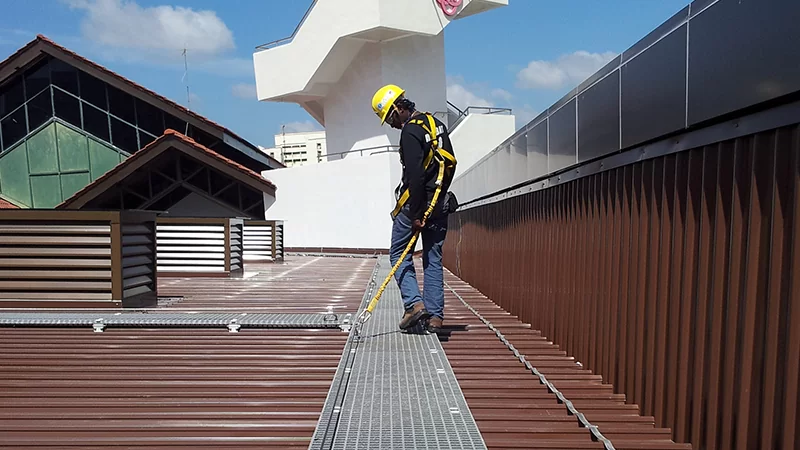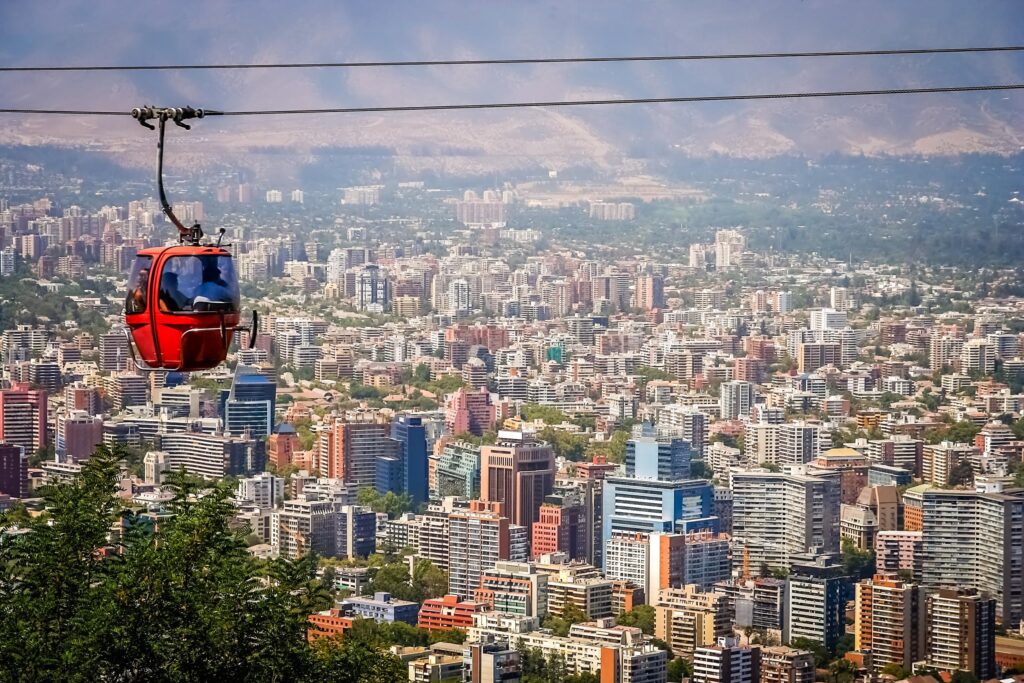The Rising Demand for Cable Car Systems in the Philippines
The Philippines has long struggled with traffic congestion, especially in highly urbanized areas like Metro Manila, Cebu, and Davao. As the population continues to grow, cities are searching for transport alternatives that can reduce commute times while maintaining environmental sustainability. One solution gaining momentum is the cable car system, which is now being recognized not only as a tourist attraction but also as a viable urban mobility option. Cable car contractor solution Philippines providers are helping government agencies and private developers address this demand through innovative design and expert project execution.
Tourism destinations such as Baguio, Tagaytay, and Palawan are also exploring cable car systems as a way to enhance visitor experience while reducing the reliance on road-based transport. The unique terrain of the country, with its mountains, coastal areas, and islands, makes cable cars particularly effective in connecting communities that are otherwise difficult to access. As discussions around smart cities and eco-friendly transport gain traction, cable cars are no longer considered a luxury but a necessity for sustainable infrastructure.
Why Partnering with a Professional Cable Car Contractor Matters
Building a cable car system is a complex undertaking that requires precision engineering and strict adherence to safety standards. Partnering with a professional cable car contractor solution Philippines ensures that every stage of the project—from feasibility study to installation and long-term maintenance—is executed with expertise. These contractors bring in-depth knowledge of international regulations, ensuring that the system complies with safety certifications recognized worldwide.
A trusted contractor also provides access to the latest technology in cable car engineering, including advanced monitoring systems and automated safety mechanisms. This not only guarantees passenger safety but also minimizes downtime and maintenance costs. Furthermore, experienced contractors understand the local terrain and can adapt design and construction methods to ensure durability and resilience against the country’s tropical climate and seismic activity.
Ultimately, choosing a professional cable car contractor is not just about building infrastructure but about creating a safe, efficient, and long-term investment that benefits communities and investors alike.
Key Features of a Reliable Cable Car Contractor Solution Philippines
When evaluating a cable car contractor, several factors must be considered to determine if they are capable of delivering a reliable solution. The best contractors begin projects with comprehensive feasibility studies, assessing everything from soil stability to environmental impact. This ensures that the system is not only safe but also tailored to the specific location and community.
Sustainability is another hallmark of a reputable contractor. Many adopt eco-friendly construction practices that minimize disruption to natural landscapes. Advanced customization options also allow systems to be designed according to community needs, whether for tourism, urban commuting, or rural accessibility.
Reliable contractors also integrate modern technologies that enhance safety and performance. Features such as automated emergency brakes, wind monitoring sensors, and real-time passenger load tracking are now standard in world-class systems. By investing in such solutions, developers gain peace of mind that the infrastructure will serve both functional and safety requirements for decades.
Engineering Excellence and Technology in Modern Cable Car Projects
The backbone of any cable car system lies in its engineering. Professional cable car contractor solution Philippines providers employ structural innovations that ensure stability, even in challenging terrains such as steep slopes and coastal cliffs. Durable materials resistant to corrosion and weather changes are used to prolong the system’s operational life.
Another significant advancement is the integration of smart technology. Contractors now utilize automated safety checks that run daily before operation begins. Real-time monitoring systems track cable tension, passenger loads, and weather conditions, allowing operators to respond quickly to any potential issues. These technologies not only enhance safety but also improve efficiency, reducing the chances of unexpected downtime.
Cable cars are no longer limited to basic transport; they now embody the fusion of design, technology, and sustainability. Modern engineering ensures that they can support both small-scale community transport and large-scale urban networks.
Applications of Cable Car Systems Beyond Tourism
While cable cars are widely associated with scenic rides for tourists, their potential extends far beyond leisure. Urban mobility is one of the most promising applications in the Philippines. By offering an alternative route above congested roads, cable cars can significantly reduce commute times in high-density cities.
Remote communities located in mountainous or island areas also benefit greatly from cable car systems. These areas, often underserved by traditional infrastructure, gain access to schools, healthcare facilities, and economic opportunities through aerial transport.
Cable cars also contribute to eco-tourism by providing sustainable transport methods that reduce environmental impact compared to buses or private vehicles. Additionally, cable car systems can play an important role in disaster response, allowing quick movement of supplies and personnel when roads are blocked due to flooding or landslides.
Choosing the Right Cable Car Contractor in the Philippines
Selecting a contractor is a crucial step in ensuring the success of a cable car project. The right cable car contractor solution Philippines should demonstrate extensive experience backed by international certifications. Reviewing their portfolio of previous projects provides insight into their capabilities and reliability.
Qualities to look for include:
- Proven track record in cable car design and construction
- Strong partnerships with international technology providers
- Transparent communication and pricing strategies
- Commitment to safety and sustainability standards
- Ability to provide long-term maintenance and after-sales support
By thoroughly vetting contractors, developers and government agencies can avoid costly mistakes and delays. An experienced contractor not only builds the system but also acts as a long-term partner for maintenance and operational guidance.
Cost Considerations and Long-Term Value
The cost of a cable car project in the Philippines can vary depending on terrain, scale, and technology integration. Mountainous and coastal projects may require additional structural reinforcement, while urban systems might involve more complex station designs. Despite the higher initial investment, the long-term value of a cable car system is significant.
Reliable systems reduce maintenance expenses, improve passenger safety, and generate consistent revenue streams from both daily commuters and tourists. Contractors who provide after-sales service and system upgrades help extend the operational lifespan of the infrastructure.
When evaluating costs, it is important to look beyond upfront expenses and consider the overall return on investment. A well-planned cable car project can contribute to urban development, tourism growth, and sustainable community access.
Sustainability and Environmental Benefits of Cable Car Systems
Cable cars are among the most environmentally friendly transport options available today. Unlike traditional vehicles, they produce minimal carbon emissions, especially when integrated with renewable energy sources. This makes them an attractive option for cities and tourism destinations committed to reducing their carbon footprint.
Another benefit is the minimal land disruption required for construction. Compared to building roads or railways, cable car systems require less excavation and land clearing, preserving natural habitats.
By reducing reliance on fossil-fuel-driven transportation, cable cars contribute to cleaner air and improved public health. They also complement eco-tourism initiatives, showcasing how modern infrastructure can coexist with nature while providing sustainable access to remote areas.
Future Outlook for Cable Car Contractor Solution Philippines
The future of cable car systems in the Philippines looks promising as both public and private sectors explore new opportunities. Government infrastructure initiatives increasingly consider cable cars as part of long-term transport planning, especially for densely populated urban areas. Public-private partnerships are paving the way for larger projects that combine tourism development with community access.
Globally, advancements in cable car technology are also influencing local markets. From energy-efficient propulsion systems to AI-powered monitoring, these innovations are shaping the next generation of aerial transport. With the expertise of reliable contractors, the Philippines is well-positioned to adopt these technologies and create world-class transport networks.
As sustainability and smart infrastructure become central to national development, cable car systems stand out as both a practical and forward-looking solution.
Frequently Asked Questions (FAQ)
1. How safe are cable car systems installed in the Philippines?
Cable car contractor solution Philippines providers follow strict international safety standards, ensuring that systems are equipped with emergency brakes, weather monitoring sensors, and automated checks to keep passengers secure.
2. What is the typical project timeline for a cable car installation?
Timelines vary depending on scale and terrain, but most projects range from 12 to 24 months, including feasibility studies, design, construction, and testing.
3. Can cable cars be used for daily city commuting, not just tourism?
Yes, cable cars are increasingly being used in urban environments worldwide to ease congestion, and the Philippines is exploring similar applications.
4. How do contractors ensure the project complies with safety and environmental regulations?
Contractors work closely with government agencies, follow international certifications, and adopt eco-friendly construction practices to meet safety and environmental standards.
5. What factors influence the cost of a cable car project in the Philippines?
Costs are affected by terrain, system capacity, technology integration, and scale of the project. Urban projects may be more expensive due to complex infrastructure needs.
6. Do contractors provide ongoing maintenance and system upgrades?
Yes, reputable contractors offer long-term maintenance services and periodic system upgrades to ensure smooth and safe operation.
Takeaway
The cable car contractor solution Philippines offers more than just transportation—it represents progress in sustainable mobility, tourism development, and community connectivity. By choosing the right contractor, stakeholders ensure that projects are not only safe and efficient but also future-ready. As the nation embraces smarter and greener transport solutions, cable cars have the potential to transform both urban and rural landscapes, making them a cornerstone of the Philippines’ modern infrastructure.











